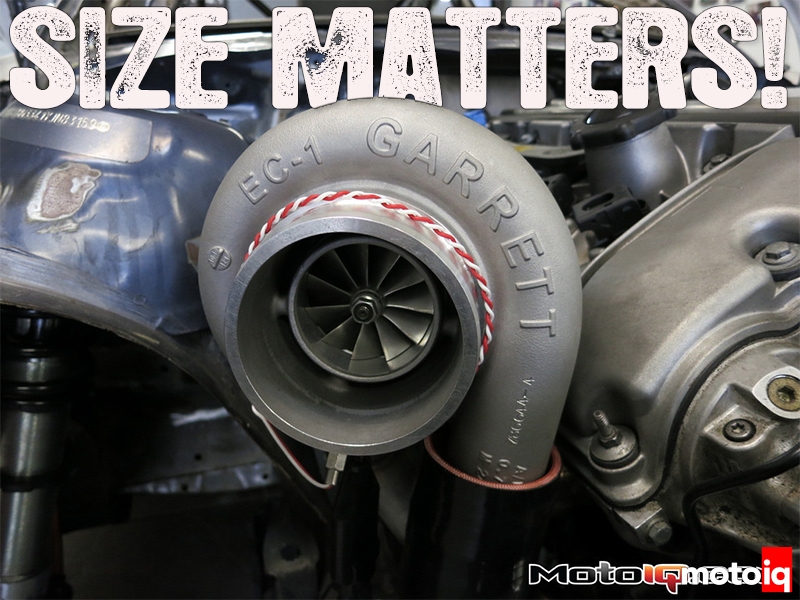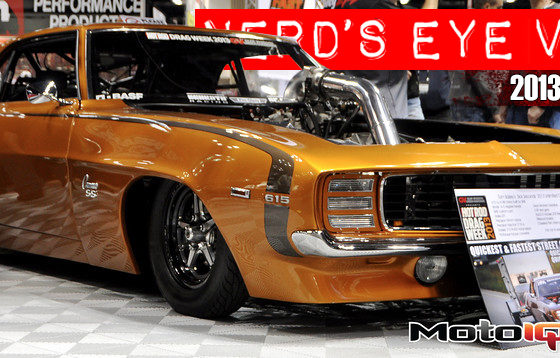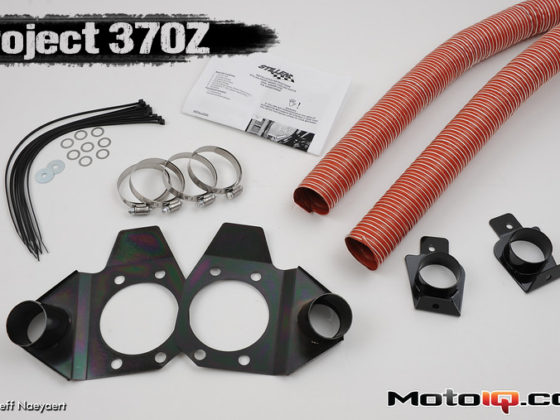
Turbo Tech: Size Matters!
Khiem Dinh is an engineer for Honeywell Turbo Technologies at the time of this writing. All statements and opinions expressed by Khiem Dinh are solely those of Khiem Dinh and not reflective of Honeywell Turbo Technologies.
This quick guide to selecting a turbo size is only intended for spark ignition engines as diesel engines are a completely different ball game with compound turbos and all. The very first thing you need to ask yourself is what the heck you intend to use the car for as that will determine the type of powerband that best suit your needs. I’ll categorize cars into three main usage groups: Street, Road Course, and Drag.
 Project STI is the street turbo car in the MotoIQ fleet.
Project STI is the street turbo car in the MotoIQ fleet.‘Street’ is a car intended for daily driving duties. The torque curve peaks quickly at low engine speeds as much of your time in street driving involves accelerating from a stop. Therefore, having ample torque at low engine speeds is desirable for driving in traffic. To get that low-end torque, the engine requires a relatively small turbo. This is how nearly every turbo car is sized from the automotive manufacturer. The engines typically produce 100-150hp/liter on pump gas.


‘Road Course’ defines a car that spends most of its time in the upper half of the rev range. A road course car still needs adequate mid-range to pull out of lower speed corners, but it can sacrifice the low-end torque to gain top-end power. Many gearheads like us will go this route for a fast street car as we are willing to give up torque in the bottom third of the engine rpm range to gain a good chunk of horsepower up top. Turbos sized for an application like this will typically put engines in the 200-250hp/liter range on pump gas.


‘Drag’ is a car that spends all of its time in the upper rpm range. When you’re drag racing, all you need is top-end, so you sacrifice both low-end and mid-range to get maximum top-end power. The sky is the limit here and this is strictly race gas territory. 500hp/liter is not unreasonable though you’ll need a built engine for sure! I’m not too sure how long the engine will hold up either at this point. A LOT of guys THINK they want a monster power car for the street. So they build these 800whp Evos with tons of lag that also require a high torque capacity clutch with all the modulation ability of an on/off light switch. I have seen the same story over and over; a super high horsepower car gets built as a daily driver and the lag and lack of clutch modulation make it horrible to drive on the street. Then the car gets promptly sold. Don’t be that guy, make sure you know exactly what you REALLY want out of your car.
 With turbos, bigger is laggier. It’s as simple as that. For a street car, you want a small turbo. Road course cars will opt for a medium size. Drag cars will go as big as they can fit and the engine can handle. To illustrate I plotted out the rough shapes of the torque curves for Street, Road Course, and Drag turbo sizing.
With turbos, bigger is laggier. It’s as simple as that. For a street car, you want a small turbo. Road course cars will opt for a medium size. Drag cars will go as big as they can fit and the engine can handle. To illustrate I plotted out the rough shapes of the torque curves for Street, Road Course, and Drag turbo sizing.


